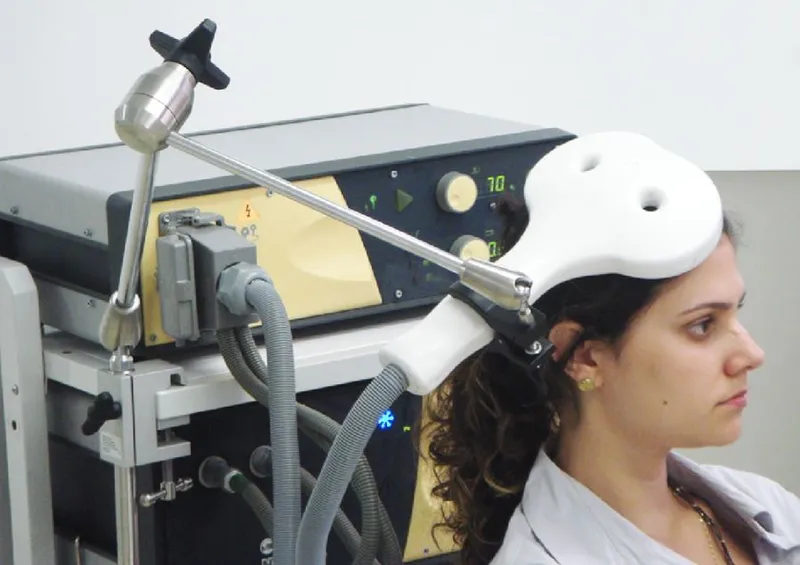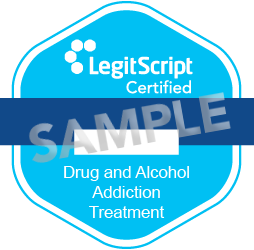Transcranial magnetic stimulation (TMS) is a therapeutic medical procedure that uses magnetic pulses to stimulate the brain. It can effectively treat various mental health conditions, including depression, anxiety, PTSD, and obsessive-compulsive disorder. The procedure is non-invasive and doesn’t require any drugs or surgery.
During the procedure, a doctor will place a magnetic coil against the scalp near the brain area associated with the treated condition. The coil will then produce a series of magnetic pulses traveling through the skull and brain. The stimulation of neurons can help reduce symptoms of the patient’s mental health condition, sometimes very quickly.

A Deep Dive Into TMS Meaning
Transcranial magnetic stimulation is a safe, FDA-approved treatment for a wide range of mental health conditions. Studies have shown that it can be effective in treating depression, with up to 60% of patients experiencing a significant reduction in symptoms. Although this procedure isn’t a cure for mental health conditions, it can be effective with other treatments, such as psychotherapy and medication.
The most commonly targeted parts of the brain are the dorsolateral prefrontal cortex, or DLPFC, and the dorsomedial prefrontal cortex, or DMPFC. The DLPFC is a region of the brain that plays a role in cognitive functions such as decision-making, problem-solving, and focusing. The DMPFC regulates emotional processes such as fear, anxiety, and mood. Stimulating these areas can reduce symptoms of depression, including feelings of sadness, low energy, and difficulty concentrating.
Research also suggests that transcranial magnetic stimulation can help treat other mental health conditions, such as anxiety and obsessive-compulsive disorder. It may effectively reduce symptoms of these conditions by altering the activity of the brain’s neural networks. Because there is no TMS medication for patients, the treatment isn’t habit-forming or debilitating.
Are There Any TMS Side Effects?
Harvard Medical School says transcranial magnetic stimulation is a safe, painless, and potentially effective treatment. Some doctors may prescribe TMS with other treatments, such as cognitive behavioral therapy, physical therapy, or gentle Transcranial magnetic stimulatio medications.
One of the primary benefits of Transcranial magnetic stimulatio compared to other procedures is that it has fewer side effects. Because TMS is non-invasive and doesn’t require dependency-forming drugs, it doesn’t have the same risk of side effects that can occur with antidepressants or benzodiazepines. Additionally, transcranial magnetic stimulation isn’t associated with the same risks of addiction that can occur with pharmaceuticals.
Another benefit of TMS is that it can produce long-term outcomes. While medications and psychotherapy can help provide short-term relief, TMS can have long-term benefits. Studies show that TMS can reduce symptoms of depression for up to 12 months after treatment.
With the help of TMS psychiatry, patients could begin to see results in as little as two to three weeks. This makes it a great option for those who may not have the time, resources, or desire to commit to longer-term treatments. Without the complications of TMS side effects, patients can expect less disruption to their lives during and after treatment.
What Does the Research Say About Transcranial Magnetic Stimulation Effectiveness?
TMS testing has shown the procedure to be effective in treating conditions such as generalized anxiety disorder, social anxiety disorder, and post-traumatic stress disorder. TMS can also help manage pain, including chronic pain and migraine headaches. Moreover, TMS can effectively treat attention deficit hyperactivity disorder and tinnitus.
Treatment for substance abuse is another example of TMS effectiveness. Studies suggest that TMS can reduce cravings and help individuals avoid alcohol and narcotics. TMS may also be effective in treating Alzheimer’s disease, although the results in this area have been mixed.

The Transcranial Magnetic Stimulation Procedure
A TMS device consists of a powerful electromagnet that sends a magnetic field through the skull and stimulates the neurons in the targeted area of the brain. During a TMS session, the patient will sit in a comfortable chair and wear a helmet containing an electromagnet. The device produces a series of magnetic pulses that locally stimulate neurons.
A TMS clinic will administer the procedure five times weekly for four to six weeks. The treatment is usually painless, although some patients may experience a slight tingling sensation. During the session, the patient will remain awake and alert. The entire procedure usually takes about 20 minutes.
At Mind Body Optimization, treatment includes traditional and alternative approaches, such as TMS, to provide holistic, comprehensive care. Addiction, mental health, and co-occurring conditions are interconnected, so treating the whole person is important, not just the symptoms. Holistic treatment can help relieve the underlying causes of addiction, depression and anxiety while addressing any physical or emotional issues that may be contributing to the condition. If you’re looking for mental health support or more information on TMS, reach out to Mind Body Optimization today.





